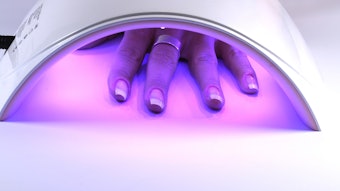
Editor’s note: This article is the seventh installment in a series covering EU requirements for cosmetic products; see the previous: Part I, Part II, Part III, Part IV, Part V and Part VI.
As previously described, Cosmetics Regulation (EC) No. 1223/2009 is the main regulatory framework for cosmetic products placed on the EU market.1 Its purpose is to ensure products are safe for human health, thus it requires cosmetic ingredients to undergo safety assessment.2 Per the EU, the safety of cosmetic products is based on the safety of their ingredients;3 thus, the toxicological profile of ingredients must be evaluated.4
Skin sensitization is one of the critical endpoints used to assess cosmetic ingredient safety, as highlighted in the regulation. Furthermore, as indicated in a previous column, since 2013, the regulation requires this assessment to be made using non-animal methods. Considerations for non-animal skin sensitization testing are discussed here.
Adverse Outcome Pathway for Skin Sensitization
A recent development upon which new alternative in vitro methods have been built to test skin sensitization is the adverse outcome pathway (AOP) concept. The AOP is a sequence of four key events (KE) ranging from the molecular-initiating event to an in vivo outcome, developed by the Organization for Economic Co-operation and Development (OECD) and summarized as follows:5
- Molecular interaction of substances to skin proteins;
- Keratinocyte inflammatory responses;
- Activation of dendritic cells; and
- T-cell proliferation.
The AOP is helpful to ensure science-based investigations on key events.
OECD-validated In vitro Methods
The mandate for non-animal testing has spawned the development of several in vitro methods6 based on the AOP, as noted. As of this date, three methods validated by the OECD, each addressing a KE of the AOP, include:7
- the Direct Peptide Reactivity Assay (DPRA), which addresses the first KE (OECD442C, Feb. 2015);
- the KeratinoSens sensitization assay, which addresses the second KE (OECD442D, Feb. 2015); and
- the human cell line activation test (h-CLAT), which addresses the third KE (OECD442E, July 2016).
Integrated Testing Strategy
It is important to note, the process of skin sensitization is too complex to predict an adverse in vivo outcome using only a single alternative assay, or a simple combination of a few data points. An integrated testing strategy (ITS) is necessary.7, 8
All data sources can be used, including from data banks, published literature, in silico (QSAR) and in vitro tests, relevant data on analogous compounds, post-market surveillance, etc.
The three in vitro tests described above often are used together in an ITS with a “two out of three” prediction model; where two concordant results are needed to reach a conclusion. Other tests, currently under validation, that might be used as part of an ITS include SENS-IS, U-SENS, LuSens and IL-8 Luc assays.
Human Repeat Insult Patch Test
Finally, the human repeat insult patch test (HRIPT) is a clinical study using a panel of volunteers that is preferably performed using formulations to assess skin sensitization potential. For ethical reasons, the HRIPT may only be performed if induction is not expected due to available pre-information;7 i.e., the toxicological profile review of each ingredient. Within the scope of the European regulation, the HRIPT should be used as a confirmation test, only to demonstrate the absence of sensitization potential.
Follow this series next month, when we cover microbiological considerations.
References
1. eur-lex.europa.eu/legal-content/EN/TXT/HTML/?uri=CELEX:02009R1223-20150416&from=EN
3. eur-lex.europa.eu/legal-content/EN/TXT/?uri=CELEX%3A32013D0674
5. oecd.org/officialdocuments/publicdisplaydocumentpdf/?cote=env/jm/mono(2012)10/part1&doclanguage=en
6. K Reisinger et al, Systematic evaluation of non-animal test methods for skin sensitization safety assessment, Toxicology In vitro 29(1) 259-70 (Feb 2015)
8. J Jaworska, Integrated testing strategies for skin sensitization hazard and potency assessment, State of the art and challenges, Cosmetics 3 16 (2016)
Additional Reading
European Commission web site, mdpi.com/2079-9284/3/2/14










